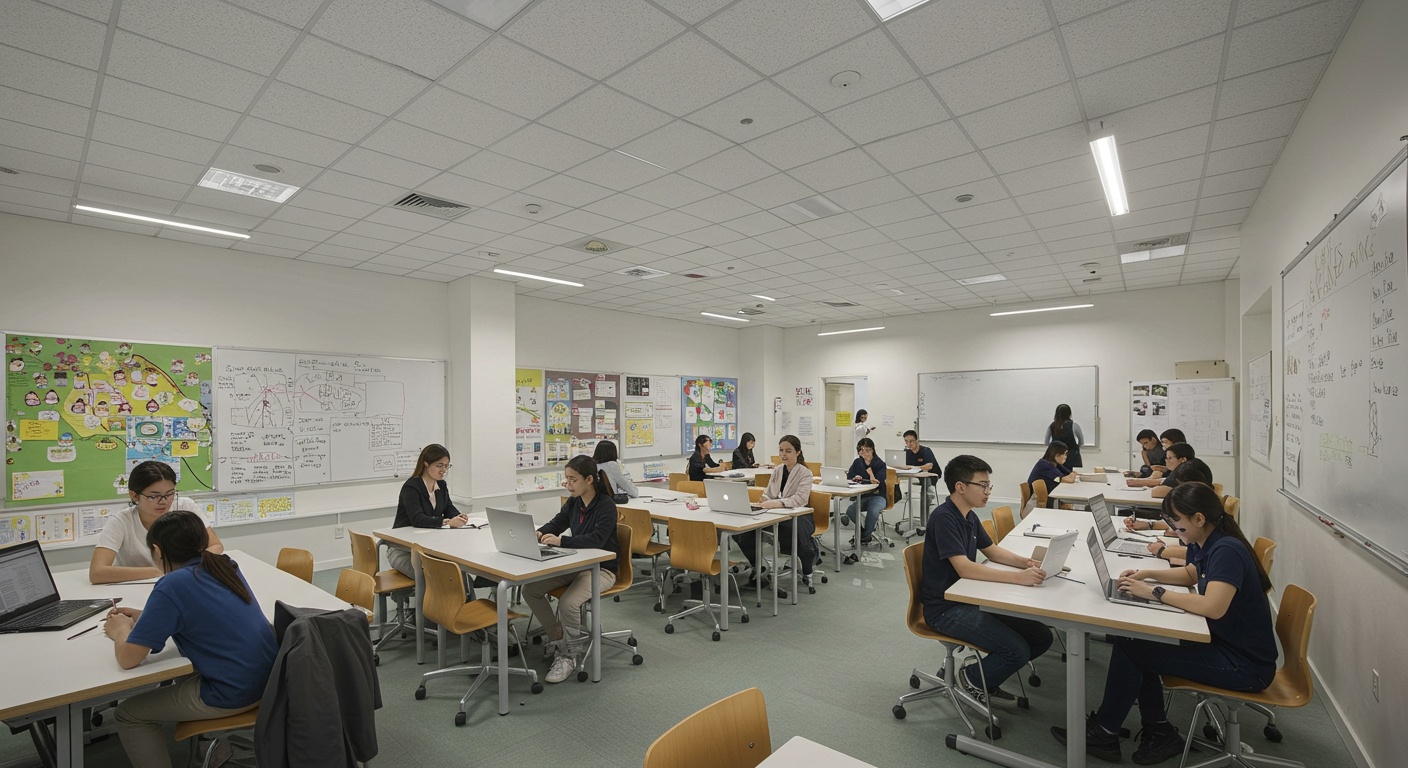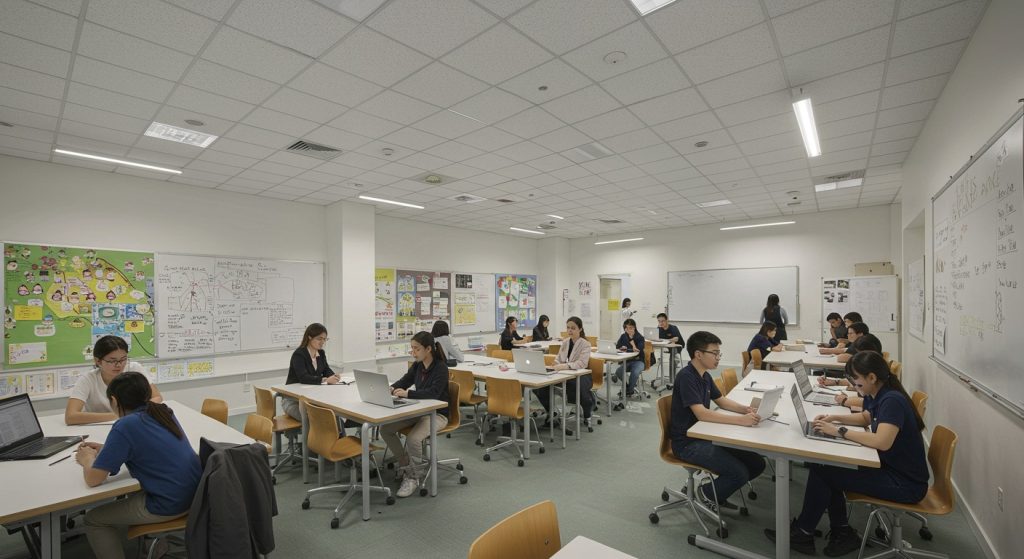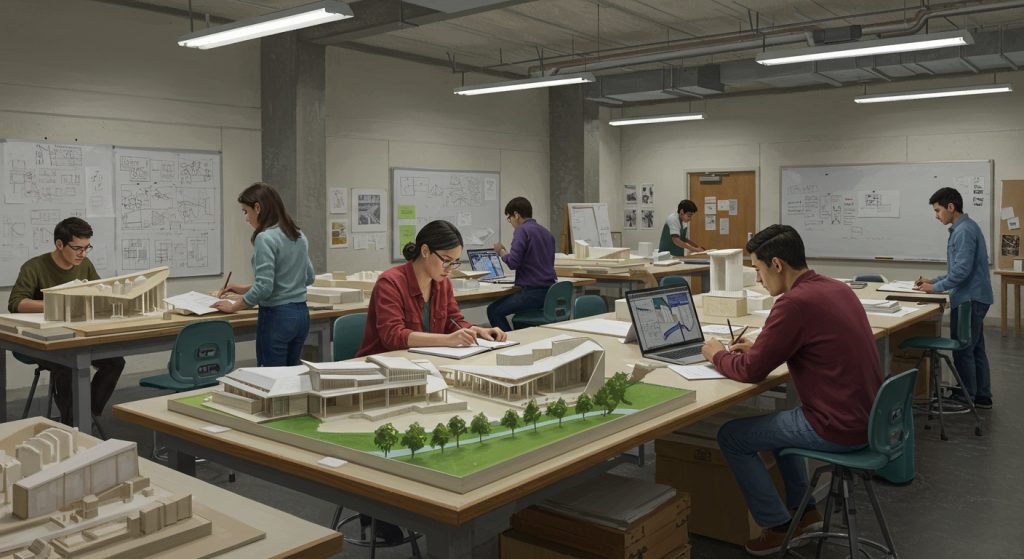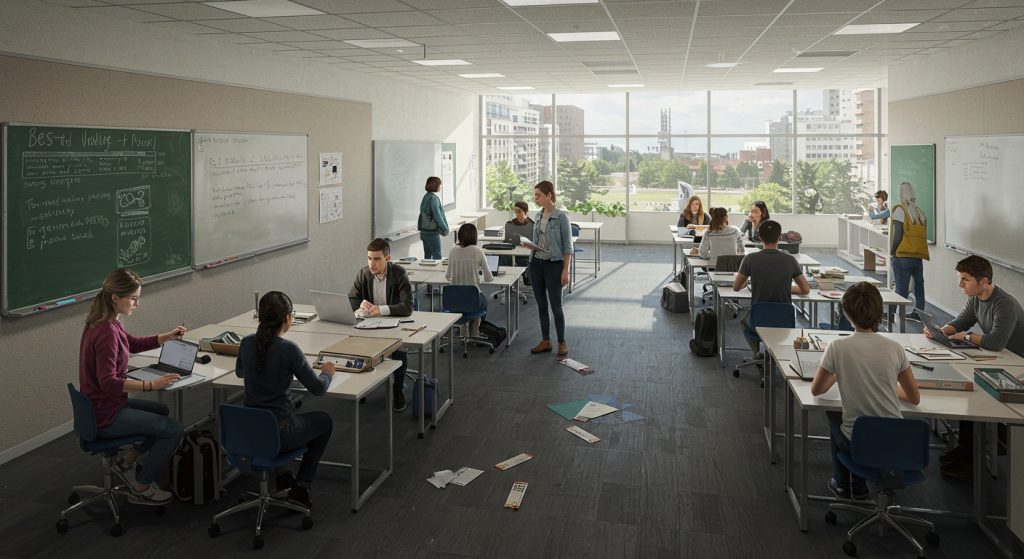Dreaming of designing sustainable skyscrapers or culturally-sensitive housing. Worried about tuition fees? Southeast Asia’s burgeoning architectural scene offers a wealth of opportunity. Increasingly, accessible educational pathways. From Bangkok’s innovative design schools embracing BIM technology to Kuala Lumpur’s programs emphasizing green building practices, affordable architecture degrees are within reach. Discover how these programs are not only lowering the financial barrier to entry but also equipping graduates with the skills to tackle Southeast Asia’s unique urban challenges, like rapid urbanization and climate change resilience, shaping the future built environment. Explore how to leverage these opportunities.

Understanding Architectural Education in Southeast Asia
Southeast Asia presents a unique and vibrant landscape for architectural studies. The region is experiencing rapid urbanization, demanding innovative and culturally sensitive architectural solutions. Studying architecture here offers exposure to diverse building traditions, from ancient temples and traditional housing to modern skyscrapers, alongside the opportunity to contribute to the region’s evolving urban environment. Architectural programs in Southeast Asia aim to equip students with the skills to design sustainable, functional. Aesthetically pleasing spaces that respond to the specific needs and contexts of the region. The cost of living and tuition fees are often significantly lower compared to Western countries, making it a viable option for students seeking quality architectural education on a budget.
Factors Contributing to Affordability
Several factors contribute to the affordability of architectural programs in Southeast Asia:
- Lower Tuition Fees: Tuition fees at universities in Southeast Asian countries are generally lower than those in developed nations like the United States, United Kingdom, or Australia. This is often due to government subsidies and lower operational costs.
- Lower Cost of Living: The cost of living, including accommodation, food, transportation. Materials, is significantly lower in most Southeast Asian countries compared to Western countries. This reduces the overall financial burden on students.
- Scholarship Opportunities: Many universities and government organizations offer scholarships and financial aid to international students, further reducing the cost of education.
- Exchange Programs: Some universities have exchange programs with institutions in other countries, allowing students to study for a semester or year abroad at a reduced cost.
Top Countries for Affordable Architecture Programs
Several Southeast Asian countries offer affordable and high-quality architecture programs. Here’s a look at some of the top contenders:
- Malaysia: Malaysia has emerged as a popular destination for international students due to its relatively affordable cost of living and high-quality education system. Several universities offer architecture programs accredited by international bodies.
- Thailand: Thailand boasts a rich architectural heritage and a growing number of internationally recognized universities. The cost of living is relatively low, making it an attractive option for budget-conscious students.
- Indonesia: Indonesia, with its vast archipelago and diverse cultures, offers unique opportunities for architectural studies. Several universities offer programs focusing on traditional Indonesian architecture and sustainable design.
- Philippines: The Philippines has a long history of architectural education and a strong emphasis on practical training. Tuition fees and living expenses are generally lower than in other Southeast Asian countries.
- Vietnam: Vietnam’s rapidly developing cities and rich cultural heritage make it an exciting place to study architecture. The cost of living is very affordable. Several universities offer programs in English.
Key Considerations When Choosing a Program
When selecting an affordable architecture program in Southeast Asia, consider the following factors:
- Accreditation: Ensure that the program is accredited by a recognized architectural accreditation body, such as the Board of Architects Malaysia (LAM) or the Philippine Institute of Architects (PIA). Accreditation ensures that the program meets certain quality standards and that graduates are eligible to practice architecture.
- Curriculum: Review the curriculum to ensure that it covers the core areas of architectural design, history, theory. Technology. Look for programs that offer specializations in areas that interest you, such as sustainable design, urban planning, or heritage conservation.
- Faculty: Research the faculty members and their expertise. Look for professors with relevant industry experience and a strong research background.
- Facilities: Consider the availability of facilities such as design studios, computer labs, workshops. Libraries. These resources are essential for hands-on learning and project development.
- Location: Think about the location of the university and its proximity to architectural landmarks, construction sites. Design firms. Being in a vibrant urban environment can provide valuable learning opportunities.
- Language of Instruction: While many programs are offered in English, it’s essential to confirm the language of instruction and ensure that you have the necessary language proficiency.
- Career Prospects: Research the career prospects for graduates of the program. Look for universities with strong industry connections and placement rates.
Examples of Affordable Architecture Programs
Here are some examples of universities in Southeast Asia that offer relatively affordable architecture programs:
- Universiti Teknologi Malaysia (UTM), Malaysia: UTM offers a Bachelor of Architecture program with a strong emphasis on sustainable design and technology. Tuition fees are relatively affordable. The university offers scholarships to international students.
- Chulalongkorn University, Thailand: Chulalongkorn University’s Faculty of Architecture is one of the oldest and most prestigious in Thailand. The program offers a comprehensive curriculum and a wide range of elective courses.
- Institut Teknologi Bandung (ITB), Indonesia: ITB’s School of Architecture, Planning. Policy Development is a leading institution in Indonesia. The program focuses on sustainable development and the integration of traditional Indonesian architecture with modern design principles.
- University of the Philippines Diliman, Philippines: The College of Architecture at the University of the Philippines Diliman offers a rigorous and comprehensive architecture program with a strong emphasis on social responsibility.
- Hanoi Architectural University, Vietnam: Hanoi Architectural University is a leading institution for architectural education in Vietnam. The program focuses on the preservation of Vietnamese architectural heritage and the development of sustainable urban environments.
Scholarship and Funding Opportunities
Numerous scholarship and funding opportunities are available to international students seeking to study architecture in Southeast Asia:
- University-Specific Scholarships: Many universities offer scholarships to international students based on academic merit, financial need, or other criteria. Check the university’s website for insights on available scholarships and application requirements.
- Government Scholarships: Some Southeast Asian governments offer scholarships to international students to promote education and cultural exchange. Examples include the Malaysian International Scholarship (MIS) and the Thailand Education Hub for ASEAN Countries (TEH-AC).
- External Scholarships: Several international organizations and foundations offer scholarships to students pursuing architecture studies. Examples include the Aga Khan Foundation International Scholarship Programme and the Fulbright Scholarship Program.
- Student Loans: Explore the possibility of obtaining a student loan from your home country or an international lending institution. Compare interest rates and repayment terms before taking out a loan.
- Part-Time Work: Depending on the visa regulations of the country you are studying in, you may be able to work part-time to supplement your income. Check with the university’s international student office for data on work permits and employment opportunities.
Career Paths for Architecture Graduates in Southeast Asia
Graduates of architecture programs in Southeast Asia have a wide range of career options available to them:
- Architect: The most common career path is to work as an architect in a private firm or government agency. Architects are responsible for designing buildings and other structures, overseeing construction. Ensuring that projects meet building codes and regulations.
- Urban Planner: Urban planners work to develop and implement plans for the growth and development of cities and towns. They consider factors such as population density, transportation. Environmental sustainability.
- Interior Designer: Interior designers create functional and aesthetically pleasing interior spaces for homes, offices. Other buildings. They select furniture, materials. Lighting to create a desired atmosphere.
- Landscape Architect: Landscape architects design outdoor spaces such as parks, gardens. Plazas. They consider factors such as site conditions, plant selection. Accessibility.
- Construction Manager: Construction managers oversee construction projects from start to finish. They are responsible for budgeting, scheduling. Ensuring that projects are completed on time and within budget.
- Academic: Some architecture graduates pursue careers in academia, teaching and conducting research at universities and colleges.
- Entrepreneur: With experience and a strong network, some graduates choose to start their own architectural firms or design businesses.
The demand for skilled architects is expected to continue to grow in Southeast Asia as the region’s cities continue to develop and urbanize. Graduates with a strong understanding of sustainable design principles and local building traditions will be particularly well-positioned for success. In a related context, understanding the landscape of architectural programs and career opportunities is akin to navigating the legal field. Just as aspiring lawyers research “Top Law Schools: Public Versus Private Institutions in the USA,” prospective architects should carefully evaluate the options available in Southeast Asia.
The Impact of Technology on Architectural Education
Technology plays an increasingly vital role in architectural education and practice. Students are now using a variety of software tools and digital technologies to design, visualize. Construct buildings. Some of the key technologies used in architectural education include:
- Building data Modeling (BIM): BIM is a digital representation of a building that contains insights about its physical and functional characteristics. BIM software allows architects to create and manage building designs in a collaborative and efficient manner.
- Computer-Aided Design (CAD): CAD software is used to create 2D and 3D drawings of buildings and other structures. CAD tools allow architects to create precise and detailed designs.
- Rendering Software: Rendering software is used to create photorealistic images of building designs. These images can be used to communicate design ideas to clients and stakeholders.
- Virtual Reality (VR) and Augmented Reality (AR): VR and AR technologies are used to create immersive experiences of building designs. These technologies allow clients and stakeholders to experience a building before it is built.
- 3D Printing: 3D printing is used to create physical models of building designs. These models can be used to test design ideas and communicate design concepts.
Architectural programs are increasingly integrating these technologies into their curriculum to prepare students for the demands of the modern architectural profession.
Conclusion
Choosing an architecture program in Southeast Asia doesn’t have to break the bank. We’ve explored diverse options, highlighting institutions that balance quality education with reasonable costs. The key takeaway? Thorough research and understanding your personal financial landscape are paramount. Don’t shy away from exploring scholarships and grants specifically tailored for international students – these can significantly reduce tuition expenses. Consider also the cost of living in different cities; sometimes, a slightly lower-ranked program in a more affordable city yields a better overall return on investment. Looking ahead, the demand for skilled architects in Southeast Asia is projected to rise, fueled by rapid urbanization and infrastructure development. This presents a fantastic opportunity for graduates who are adaptable, innovative. Culturally aware. Remember, the most affordable program isn’t always the ‘cheapest’; it’s the one that provides the best foundation for your future success. Now is the time to delve deeper into specific program requirements, prepare your application. Embark on your architectural journey with confidence.
FAQs
So, what exactly do we mean by ‘affordable’ architecture programs in Southeast Asia? Is it, like, ramen-every-day affordable?
Haha, okay, maybe not quite ramen-every-day! But seriously, ‘affordable’ in this context means programs where tuition and living costs are significantly lower than, say, programs in North America or Europe. We’re talking about universities where you can get a solid architectural education without breaking the bank – think lower tuition fees, cheaper accommodation options. More accessible scholarships.
Which Southeast Asian countries generally offer the most budget-friendly architecture degrees?
Good question! Generally, you’ll find more affordable options in countries like the Philippines, Indonesia, Malaysia, Thailand. Vietnam. These places often have a mix of public and private universities offering architecture programs at various price points. Public universities, in particular, tend to be the most affordable.
Are the architecture programs at these more affordable universities any good? Will I get a decent education?
That’s a totally valid concern! Absolutely, you can get a quality education. Do your research and look for programs that are accredited by reputable organizations within the country (like the Board of Architecture in the Philippines). Check out the curriculum, the faculty’s experience. The university’s facilities. Student reviews can also be super helpful!
What kind of scholarships or financial aid should I be looking for specifically for Southeast Asian universities?
Okay, so scholarships are your best friend! Look for scholarships offered directly by the university – many have programs for international students. Also, check government scholarships from your home country that might support studies abroad. Don’t forget external organizations and foundations that offer grants or scholarships to students pursuing architecture.
Besides tuition, what other costs should I factor in when planning my budget?
Definitely more than just tuition! Think about accommodation (dorm vs. Apartment), food, transportation, textbooks and materials (architecture supplies can get pricey!) , visa fees, health insurance. Personal expenses. Don’t forget to budget for emergencies, too – it’s always better to be prepared!
Let’s say I’m interested. What’s the first step I should take to find a suitable program?
Start with research! Make a list of universities in the countries you’re interested in. Visit their websites and look at their architecture program details, including the curriculum, tuition fees, admission requirements. Scholarship opportunities. Also, try to connect with current or former students to get their insights.
Is it essential to know the local language for studying architecture in Southeast Asia?
While many programs are taught in English, learning some of the local language can be incredibly beneficial! It’ll make your daily life easier, help you connect with locals. Give you a deeper understanding of the culture – which can, in turn, inform your architectural designs!



